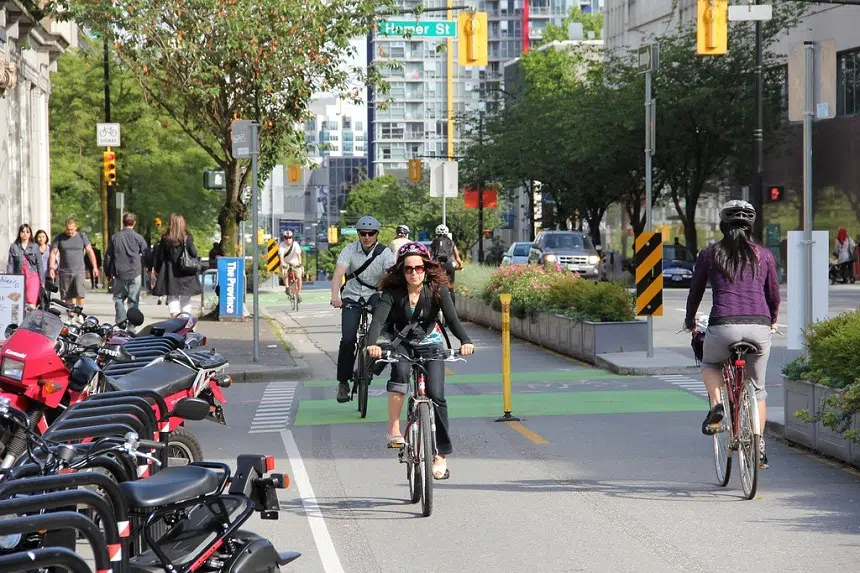Planters, concrete dividers or a completely separate traffic signal system — there are plenty of options for Saskatoon’s future downtown bike lanes.
City staff are preparing for lengthy public consultations on how bike lanes on 23rd Street, 19th Street and Third Avenue will look when they become permanent fixtures of the downtown core.
It comes after city council voted in favour of establishing the roads as the sites of the future bike lanes, but committing to a collaborative approach with businesses, drivers and cyclists on how they’ll take shape.
One thing transportation director Jay Magus was clear on: The lanes won’t look anything like the current temporary lanes.
“They’re unattractive; when it rains, the grating isn’t great,” he said of the temporary lanes at a news conference last week. “We’d love to build something permanent that functions for everybody.”
After the tight 6-5 vote on Monday night, Saskatoon Cycles co-chair Cathy Watts was already putting ideas into the mix.
She pointed to Vancouver, where several downtown bike lanes are separated from traffic using planters and trees.
“It’s a really fun place to ride, it’s really attractive,” she told 650 CKOM.
Watts noted an important improvement to the new bike lanes would have to come at intersections. She said that, right now, even experienced cyclists don’t feel safe when riding in a bike lane at a street corner.
“There’s no intersection that I would say I feel really OK at, and I’ve cycled all over the world,” she said.
Watts suggested a system similar to one employed in Vancouver, some towns in Quebec and many European cities: Separate traffic signals for bicycles.
The system would have bicycles stop at a separated red light from vehicles on the road. When the light for vehicles turns red, there would be a ban on right turns as the separate light turned green for cyclists to allow them to proceed and turn in any direction they need to.
“This is a way of controlling, that everyone knows it’s their turn,” Watts said, adding it would eliminate concerns from drivers about bikes flying across intersections from blind spots in the lanes.
Magus has also previously suggested the possibility of concrete barriers replacing the white posts as a separator between bike and traffic lanes.
Public consultations are expected to conclude for the bike lanes in 2021, after the next civic election.







